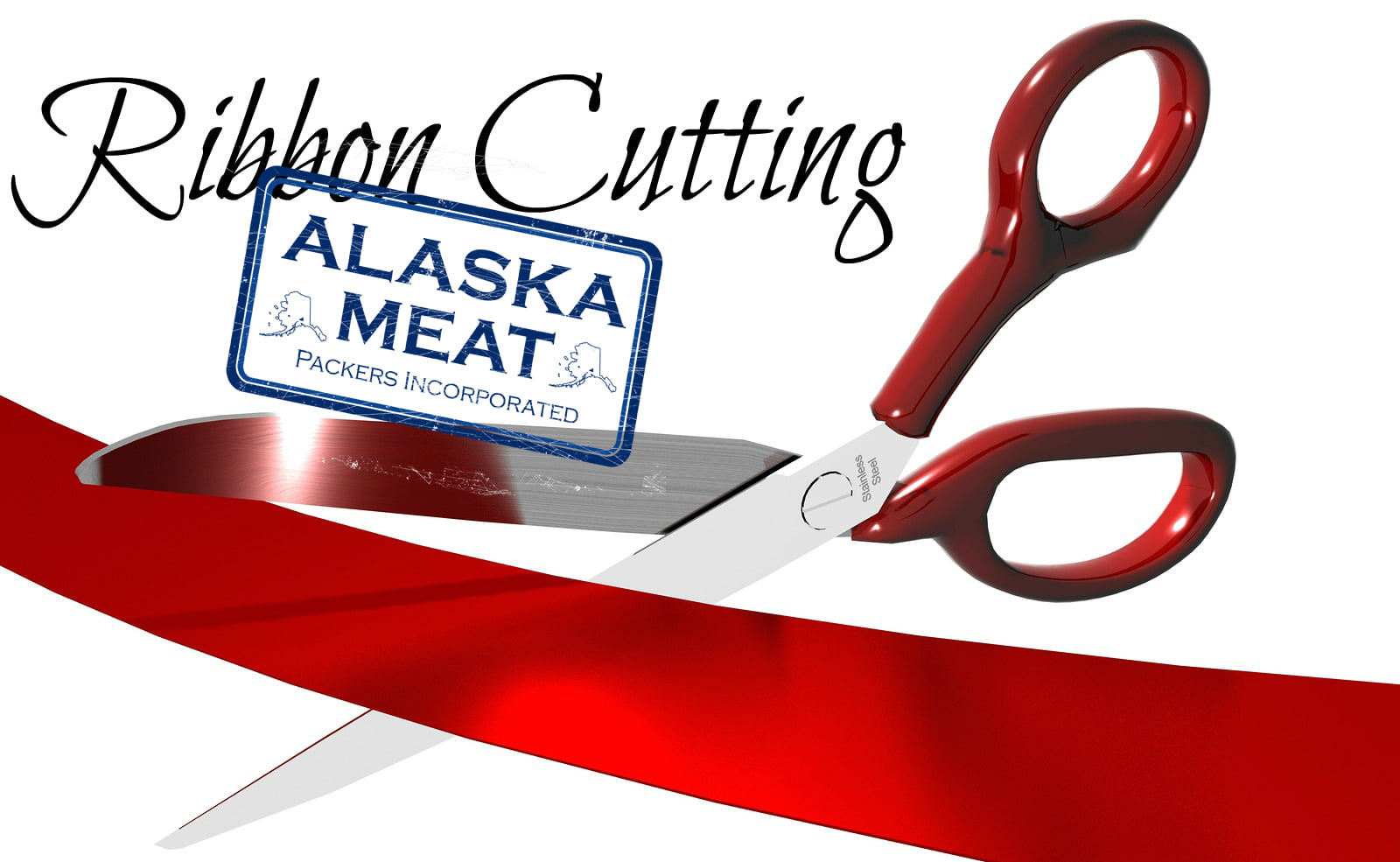 |
| Mt McKinley Meat & Sausage owner, Greg Giannulis hands keys off to Todd Elsberry, new owner of the Palmer slaughterhouse, upon its recent sale. |
The slaughterhouse formerly known as Mt. McKinley Meats and Sausages (MMMS) has been lease-purchased by a North Pole Farming family and will return to processing red meat for Alaskans soon. The plant had been shut down and was on the market after owner Greg Giannulis realized it was not profitable given current in-state livestock availability.
Here is the link: https://fb.watch/9ey-Zp9gI9/
It is hoped that the facility will be open for business in a few weeks under a new name: Alaska Meat Packers Inc. DBA Alaska Meat. Webpage: Alaskameatpackers.com Telephone: 717-500-MEAT
We had buyers who wanted to pay more to use the facility for other purposes, explained Bill Borden, broker at High Caliber Realty. But I told the director of the Division of Agriculture that we would try to keep it as a slaughterhouse if possible, and to Greg’s credit he will take less money, and I will forgo some of my fee, to make this possible.

Rumors that a group of farmers were attempting to purchase the facility are untrue. No state funds or federal grants are being paid in this deal. The owners will schedule processing of red meat animals from any Alaska farmers.
Confidentiality agreements forbid revealing the price of the purchase, by Todd and Sherrie Elsberry of Elsberry Farm. This will put the facility into the hands of a producer of meats for slaughter instead of a marketer of products as is Mike’s Quality Meats, owned by Giannulis. Elsberry Farm produces primarily pork but the slaughterhouse will be available for cattle, pork, sheep and goats.
 |
| Mike’s Quality Meats is located at 12110 Business Blvd., Eagle River, AK 99577, (907) 696-1888, and ships boxes of meat throughout the state. https://mikesqualitymeats.com/collections/all |
Giannulis originally purchased the plant in 2017 out of frustration when State Employee managers slow-rolled processing his own cattle and hogs. It had been run at a financial loss with work done by Department of Corrections prisoners for decades. Gov. Bill Walker ordered it sold when a bill from Corrections was sent to the Department of Agriculture for employee and other operational costs.[1]
Challenges of Alaska food security due to the difficulty of the work and lack of animal availability have required artificial insemination of animals for genetic diversity. Robust 4-H and Future Farmers of America programs promote a future for agriculture in Alaska. [2]
Our Alaska dependence on Seattle for food has kept prices high, according to Giannulis. Seattle is the choke point for Alaska food imports. From there most food shipments land on the docks at Anchorage. [3]
Alaska policymakers have long known that food security is lacking. MMMS was a failure until Giannulis took it over and says he made a profit until recently. Giannulis estimates he has invested $2.5 million in his operation including the farm, storefront and processing plant, without taking out any loans.
When I came to Eagle River 40 years ago I had a pair of pants and a jacket with a hole in it, he proclaimed.[4]
All across Northern Canada commercial agriculture operations produce food for that country on 10,000-50,000 acre farms, while we in Alaska have many homesteaders on small plots with subsistence farms. According to former Natural Resource Manager for the MatSu Borough, Ray Nix: The challenges for a successful agriculture operation are sufficient infrastructure, viable products, and viable market. If any one of those
elements are lacking successful commercial agriculture cannot succeed. Small operations can be successful, can succeed, but expansion is limited if they don’t have a road to the farm or power. Infrastructure is key.[5]
Commercial agriculture requires large parcels of land which are available but will require years to develop. Denial seems to be easy in backwater Juneau where legislators are fed very well by Seattle.
On the other hand, Alaska has had agriculture operations here for a long time and some of the individual farms are doing pretty well, according to Director of Agriculture, David Schade: We have at least one farmer who makes more than $5 million per year in sales, 12 farms that make over $1 million per year, 66 making between 250,000 and a million, and 101 who make between $50,000 and 250,000, said Schade. But of the 990 farms in the state, 582 of them make less than $10,000 per year. So, I am not disagreeing with your assertion that we need more large commercial producers, but there is opportunity—the pie is huge![6]
Putting the largest USDA slaughterhouse in Alaska back into production is an important step in Alaska Food Security. Bringing Alaska producers together to meet the demands of consumers is another step, but the question is how much livestock can be raised in-state to keep a plant capable of processing 300-700 animals per week? According to Giannulis it takes 4-5 acres per animal to raise cattle.
That will be the challenge of the new owners.
Resources:
[1] How Can Alaska Gain Food Security? June 2020
https://donnliston.net/2020/06/how-can-alaska-gain-food-security.html
[2] Who Dares to Farm in Alaska, September 2020
https://donnliston.net/2020/09/who-dares-to-farm-in-alaska.html
[3] Who is Making a Difference? December 2020
https://donnliston.net/2020/12/who-is-making-difference.html
[4] Food for Thought for Alaskans, December 2020
https://donnliston.net/2020/12/alaskas-food-security-options-2020.html
[5] Addressing Alaska’s Hierarchy of Needs, February 2021
https://donnliston.net/2021/02/alaska-has-food-security-options.html
[6] Are Alaska agriculture efforts working? April 2021
https://donnliston.net/2021/04/steps-to-food-security-for-alaska.html



